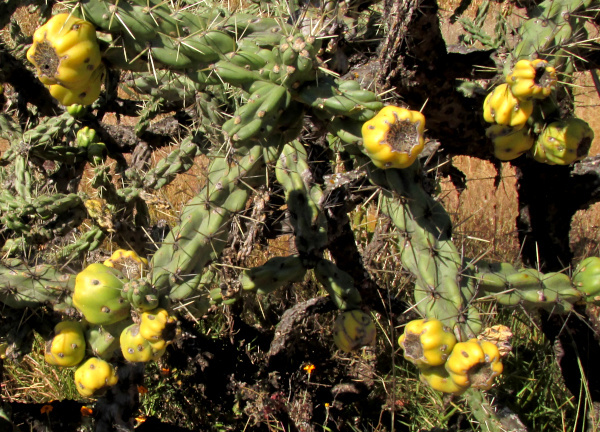Excerpts from Jim Conrad's
Naturalist Newsletter
from the February 23, 2007 Newsletter issued from Sierra Gorda Biosphere Reserve, about 2kms south of Camargo, elevation ~1760m (~5800ft), ~N21.09°, ~W99.73°, central QUERÉTARO, MÉXICO
TREE CHOLLA
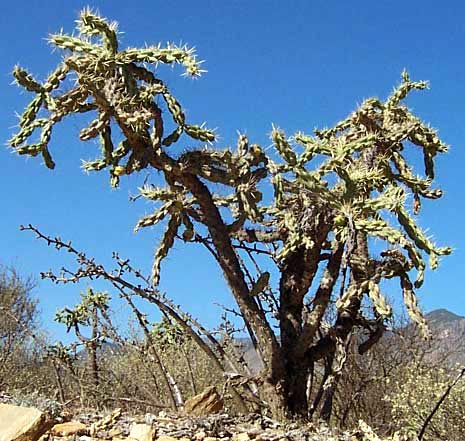
The common cholla below Camargo is the shoulder-high Tree Cholla, CYLINDROPUNTIA IMBRICATA. You can see from my picture below what's tree-like about it: It has a trunk.
This species extends north clear into Kansas and Colorado. It's also become an invasive weed in some countries.
A curious feature about Tree Cholla is that it bears spines usually invested with a yellowish or whitish papery sheath. You can see such a sheath pulled off a cholla spine below:
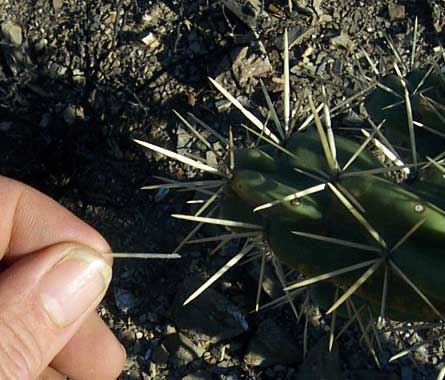
I can't figure out why the spines of these cacti bear sheathes. Many cacti produce sheathless spines and appear to do just fine. When I get stuck with Tree Cholla spines, the sheathes come off, stay in my skin as the spines themselves are removed, and the sheathes hurt a bit when being pulled out. The Tree Cholla's outer stem joints are fairly loosely attached. Those loose joints can latch onto the fur of any large mammal passing by, which serves the parent cactus's purposes, since broken-off joints can root and form new plants. Beneath Tree Chollas typically you see numerous broken-off joints lying around, their spines menacingly pointing in every direction.
Wild burros wandered the landscape below Camargo and I just wonder what kind of messes they get into with these cacti.
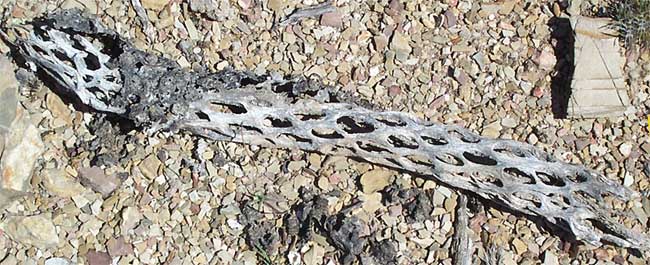
As seen above, here and there in the cactus-rich scrub I found woody, cylindrical items abundantly ornamented with diamond-shaped holes that where so geometrically aligned that the objects almost looked manmade. It took me years of occasional desert visits to figure out that these are skeletons of cholla cacti.
entry dated April 25, 2022, issued from near Tequisquiapan, elevation about 1,900m (6200 ft), ~N20.57°, ~ W99.89°, Querétaro state, MÉXICO
TREE CHOLLA FLOWERING
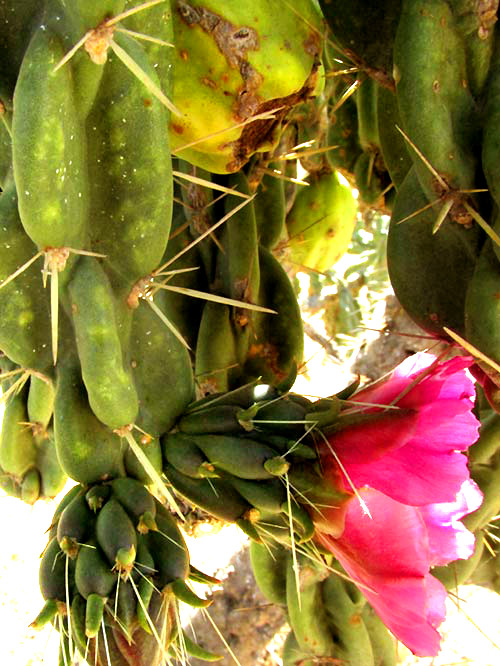
Nowadays the Tree Chollas are flowering, as shown above. Cactus flowers differ from the usual arrangement of a whorl of colorful petals arising from within a whorl of green sepals or calyx lobes below them, in that bractlike or sepal-like outer appendages gradually develop into petal-like inner appendages. When flowers do this, the terms sepals and petals are abandoned, and the appendages collectively are called tepals. So, the above rosy things are tepals, and below the larger rosy tepals you can see small rose-green tepals, and below them, green, leafy bracts, bracts being modified leaves. Inside the flower, more typical cactus-blossom features are seen:
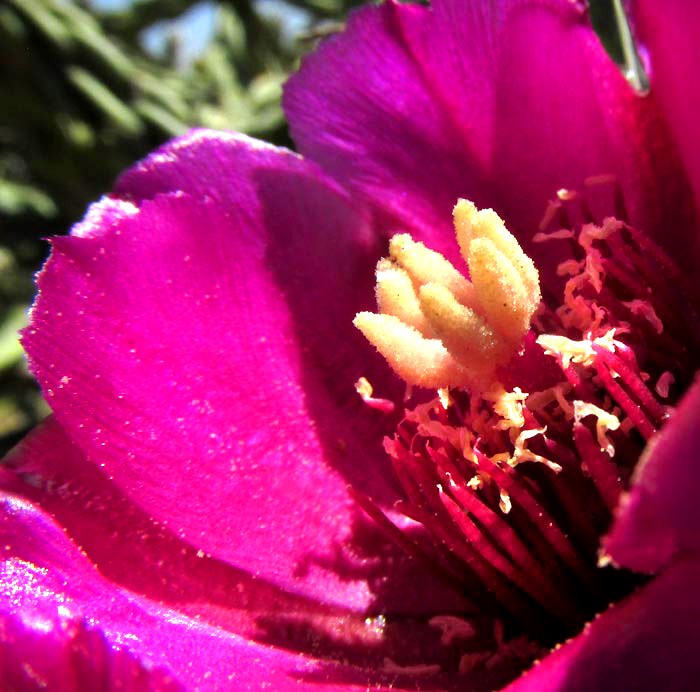
The white, upside-down-starfish item is the variously lobed stigma, where pollen grains land and germinate. Below the stigma it appears that something has feasted on the pollen-containing anthers, leaving just shreds of white anthers atop slender, magenta styles. Many kinds of bees, wasps, ants, beetles, birds and other animals eat pollen, which is rich in nutrients. They feed on it in various ways, presumably including simply eating pollen-filled anthers. Animals who eat pollen are known as palynivores. Wikipedia provides a fascinating page on palynivores.
Humans also find uses for Tree Chollas. Tree Chollas sometimes are planted as natural fences to contain livestock. In New Mexico in the US, the cactus's buds, after being de-spined, have been roasted on a grill or in campfire coals for 15-20 minutes and eaten. Immature fruits can be de-spined and boiled as a vegetable in soups. It thickens the broth like okra. Traditionally in Mexico the mature fruit have been split lengthwise, dried, and stored longterm as food. The seeds are edible and can be roasted, ground, and added to dishes to thicken them.
entry from November 14, 2021, issued from near Tequisquiapan, elevation about 1,900m (6200 ft), ~N20.57°, ~ W99.89°, Querétaro state, MÉXICO
TREE CHOLLA FRUITING
Nowadays the Tree Chollas are loaded with fruits, shown below:
